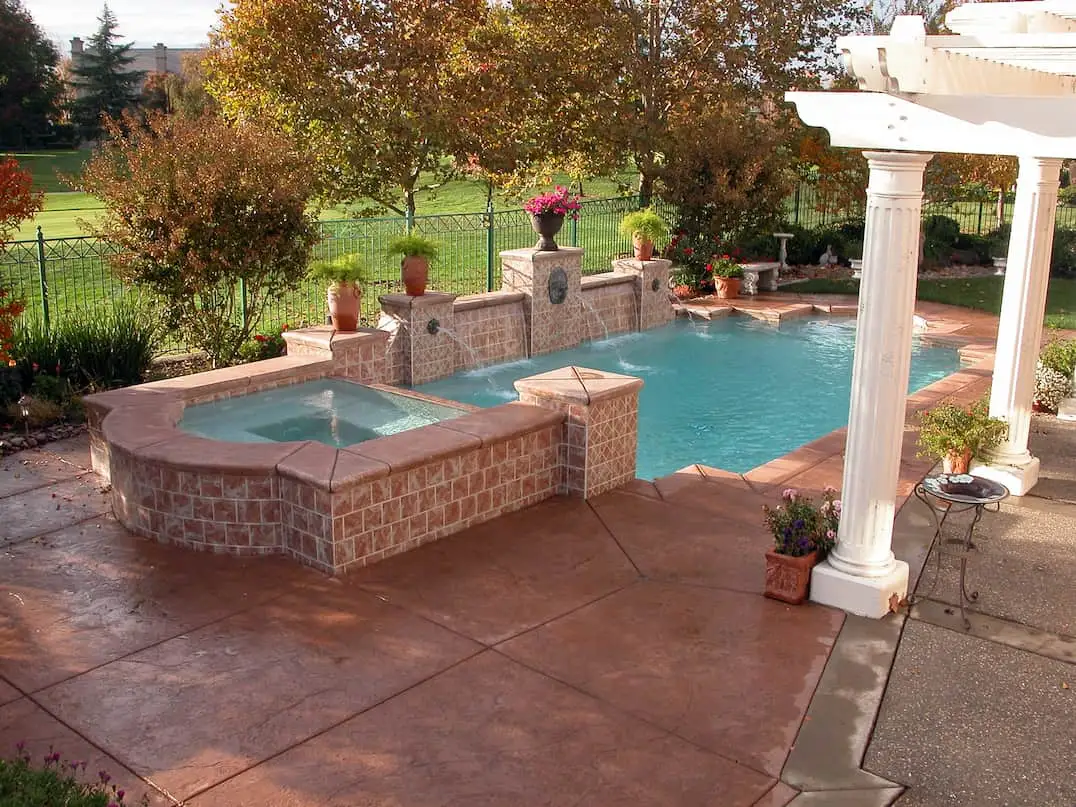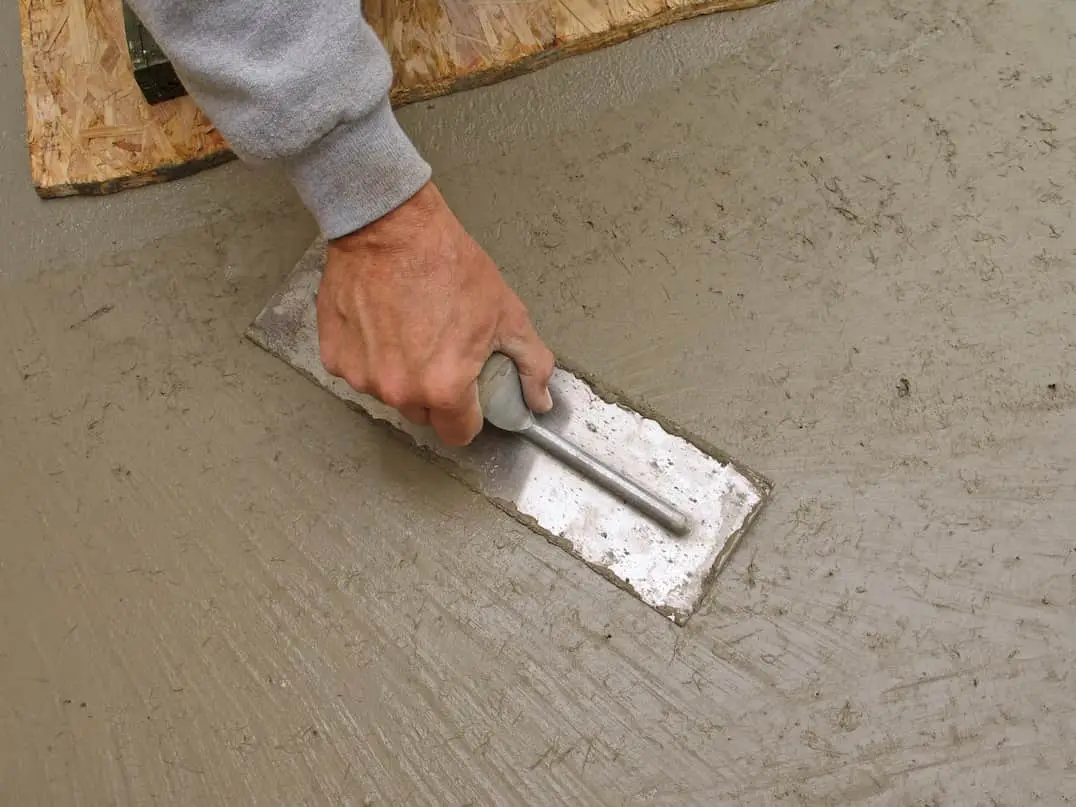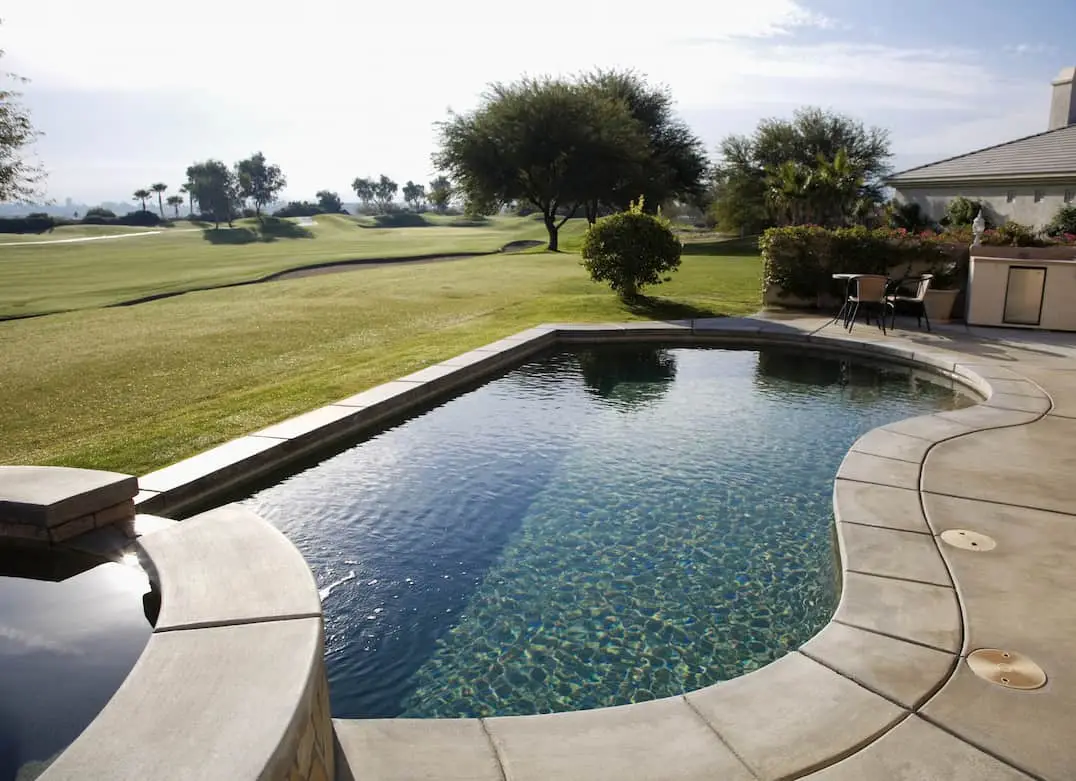Printed concrete for swimming pools: reasons for a successful alternative
Imprinted concrete stands out as one of the alternatives that gives the best performance in the decoration of pools thanks to its surprising resistances and great ability to achieve exclusive designs.
The decorative scene values it as one of the most efficient decorative claddings in this kind of environments and this has caused its demand to have increased tremendously in recent years.
A product in which aesthetics and functionality are merged, and all this at a more than economical price, which has made it a safe bet for the decoration of swimming pools.

Advantages of using printed concrete in swimming pools
Imprinted concrete has become one of the most demanded materials for decorating swimming pools. This is simply and plainly because betting on this material means achieving assured success. The surfaces shine with a great diversity of designs, all accompanied by a faithful resistance that results in a long-lasting coating. Below we will show you some of the most outstanding advantages that define the high performance of imprinted concrete in swimming pools:
It's ideal due to its waterproof nature
One of the most characteristic qualities of imprinted concrete is its impressive resistance to moisture and contact with water. A property that is enhanced up to waterproofing through the use of varnishes or sealants.
You will achieve safe and non-slip surfaces
The molds and resins used that are applied to seal the support, are responsible for giving the support this non-slip characteristic typical of concrete. This achieves a safe surface, which facilitates grip and prevents possible slips that can end in an accident, especially in areas such as swimming pools.
It withstands the weather like no other
A product with which to provide surfaces with better strength thus helping to extend their useful life. Imprinted concrete has a great resistance to weathering, so it effectively withstands sudden temperature changes, snowfall, erosion, ultraviolet radiation, pedestrian traffic, and bumps and scratches.
Highly customizable designs
If this decorative coating is known for anything, it is for its great versatility to represent a great diversity of designs. Its execution by stamping molds and its wide color catalog makes imprinted concrete offer an unlimited variation of finishes.
Long life with low maintenance
Surfaces coated with this product will not need to be attended to excessively as it is a material that requires hardly any maintenance. Using water or a broom is sufficient to remove dirt. In case of grease or oil stains, it is recommended to use a specialized detergent.
Quick and simple installation process
Its execution can be carried out directly on the original support. It also effectively adapts to terrain irregularities and unevenness, making its installation really simple and economical.
Problems of imprinted concrete for swimming pools and how to avoid them
Imprinted concrete is a popular technique for improving the appearance of pools. However, there can be problems if the concrete is not prepared and applied correctly. Here are some of the most common problems that can occur with imprinted concrete in swimming pools.
Peeling
Peeling is the most common problem with stamped concrete. It occurs when the concrete layer peels off from the pool's surface. This could be due to poor surface preparation, a bad concrete mix or incorrect application. It can also occur if the concrete is exposed to extreme temperatures during drying. To prevent peeling, make sure to prepare and apply the concrete according to the manufacturer's instructions.
Cracks
Cracks are commonly caused by premature dehydration of the substrate, thus it is essential to maintain a constant humidity of the surface in order to prevent it.
Discoloration and Porosity
Discoloration and porosity can be due to a poor mix, incorrect application or incorrect drying. It can also occur if the concrete is exposed to sunlight during drying, or rain in the case of porosity. To prevent them, make sure to follow the manufacturer's instructions when mixing and applying the concrete. It is also essential to check that the concrete dries correctly before exposing it to sunlight.
Leveling
Another common problem that arises when using stamped concrete for pool decoration is that the surface upon which the concrete is poured is not completely level. If the surface is not level, the concrete will settle unevenly and this can lead to problems when imprinting a design. To avoid this issue, it's important to ensure that the surface on which the concrete will be poured is level.
Poor mold choice
A poor choice of mold where the texture or pattern is not suitable can make the surface fail to meet the required conditions for a swimming pool, such as non-slip finish.
Saline water accumulation
One of the problems to be aware of is the formation of scales. The accumulation of large amounts of saline water can lead to surface erosion, weakening resins or sealants and causing scales to form.
This effect can also occur due to wet-dry cycles. The creation of crystals can result in pavement cracking, so it is important to constantly monitor salt levels, as well as pH levels.
Application process of stamped concrete for swimming pools: steps you must follow
The installation of stamped concrete surfaces around the pool does not require much more complication than that of any other pavement. Below we will show you the steps to follow to achieve a successful application that does not cause any future damage.

Zoning preparation
In order to guarantee a successful installation, the surface must be prepared in such a way that any kind of imperfection, such as cracks, dirt or unevenness, is eliminated. Specifically for the pool, it should be leveled in such a way that the perimeter is higher than the pool itself.
Placement of the mesh and creation of expansion joints
The mesh is vital to establish in order to provide greater balance and stability to the surface. The professional must ensure that the mesh is about 2 cm from the pavement.
Once we have finished installing the concrete, we should proceed to execute the joints, as this will prevent the pavement from crackling.
Apply, spread and level the stamped concrete for swimming pools
Once the surface has been prepared and is in the desired conditions, the stamped concrete should be applied and then spread over it. The use of gutters is recommended if the pouring exceeds 1.20 meters. Finally, the concrete should be leveled and smoothed over the surface.
Stamp concrete coloring
This is one of the phases that has the most value in the application process of stamped concrete in a swimming pool, giving the surface personality through the use of color hardener. To do this, you must check that the concrete has set properly before sprinkling the hardener.
Add release agent to the stamped concrete
In this step, a release agent must be added in liquid or powder form, all with the aim of facilitating the removal of the stamped concrete molds, without causing any damage to it.
Application of stamped molds
Once the release agent has been applied, we will move on to the next logical step, the stamping of the molds onto the uncured concrete. Once these are completely dry, the mold can be removed.
Wash and protect the stamped concrete for pools
It should be checked that the final surface is completely dry and then cleaned of the excess aggregates that have remained impregnated on it. This cleaning is usually done using pressurized water. Finally, the resin is applied to give the stamped concrete greater strength and a more intense color.
Wood imitation stamped concrete for pool: the design that never disappoints
Wood imitation stamped concrete is one of the most popular molds and it's no wonder, as it guarantees us the aesthetics of wood, but with all the advantages of stamped concrete.
Wood has the drawback that it usually gets damaged in climates or areas where there is a high degree of present humidity, which is why it is rarely seen in areas such as pools and, if it is, its maintenance is very demanding and costly.
With stamped concrete all the problems go away, providing us with a material that will effectively withstand over time, and with the aesthetics and texture of wood, creating an elegant environment with a rustic touch, which makes it really attractive.

Choose your finish in the stamped concrete for pool
It is true that the wood mold has a large number of followers, however, stamped concrete has the advantage of offering us a myriad of appearances through its texture and finishes achieved with different molds. Some of the most popular ones are: stone, tile, brick and many more. Take your time to think about which one you prefer and which one blends best with the environment, also being able to choose from a wide range of colors to give way to exclusive and totally personalized designs.
Square meter price of imprinted concrete for swimming pool
The price per m2 for the application of imprinted concrete for swimming pools does not have a fixed budget. It is necessary to assess certain variable factors in order to, based on this, get an approximate price of what the installation may mean.
For this, it is recommended to contact an expert with experience who knows the product in detail and can accurately calculate it. This will take into account the dimensions of the work, as well as the price for labor, the difficulty of the installation, the quality of the material and the geographical area.
In the case of Spain also it is required to use a special varnish with slip level 3, an element that should also be taken into account. However, in general terms, the price of imprinted concrete for swimming pools in Spain is between 40 and 100 euros per m2.
Tips for keeping imprinted concrete for a swimming pool in optimal condition
Imprinted concrete is a material that greatly facilitates both its application and subsequent maintenance, however, if certain measures are taken, the results can be even more satisfactory. We will show you some tips to ensure that your imprinted concrete for swimming pool lasts satisfactorily over time and with the same performance and aesthetics as the first day.
Using imprinted molds with a greater anti-slip potential
Since it is a swimming pool, select designs that create more anti-slip surfaces in order to prevent falls and make it safer. For this, it is vital to choose a mold that creates imprinted concrete with a suitable texture and relief.
Do not pour an excess of resin
The excess can cause surface problems such as a lack of shine of the concrete, as well as the appearance of white spots or bubbles during the curing time.
Clean the surface
Although it does not require extensive cleaning and maintenance, it is advisable to clean it occasionally with water or a mild detergent.
Renew the varnish every 2-3 years
The same happens with the varnish. The passage of time can deteriorate it and make it not as effective for surface protection. Therefore, it is advised that the resin be renewed every 2 or 3 years in order to regain the same strength, as well as shine and color.
Wash the floor after using the pool
This recommendation is especially addressed to those pools that are saltwater. In order for it not to affect the state of the concrete, it is recommended that after each bath the pavement be cleaned with water to remove the saline residues.